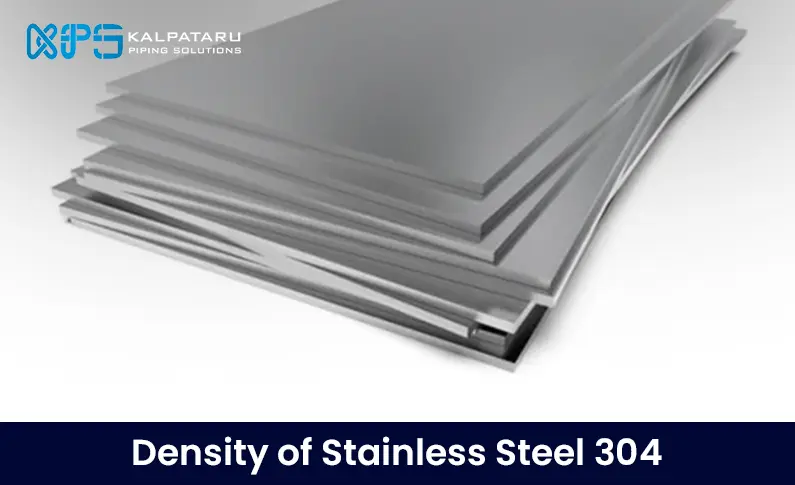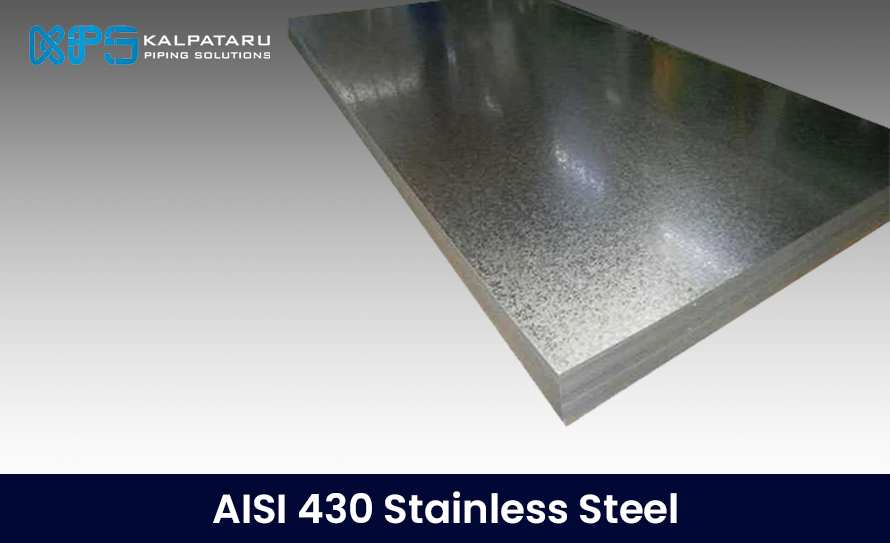Stainless steel 304 & stainless steel 304L are also known as 1.4301 and 1.4307 respectively. Stainless steel 304, often called 18/8 due to its composition of 18% chromium and 8% nickel, is widely used in applications like sinks and cookware because of its excellent deep-drawing properties. On the other hand, 304L is a low-carbon version, preferred for thick components where better weldability is needed. Some products are “dual certified” to meet both 304 and 304L standards, such as certain plates and pipes.
For high-temperature applications, 304H, a higher carbon variant, is available. The properties listed here are typical for flat-rolled products covered by ASTM A240/A240M standards, though there might be slight variations depending on specific standards.
In terms of density of stainless steel 304 is 7,930 kg/m3 (or 7.93 g/cm3), which equals 0.286 lb/in3. One cubic meter of stainless steel 304 & 304l weighs 7,930 kg.
To calculate the density (ρ), the formula is simple: divide the mass (m) by the volume (V), expressed as ρ = m/V. Density can be measured in various units, including grams per cubic centimeter (g/cm3), kilograms per cubic meter (kg/m3), or pounds per cubic inch (lb/in3), depending on the measurement system.
By understanding these properties, users can make informed decisions when selecting stainless steel 304 or 304L for different industrial or household applications.
|
Stainless Steel |
Density (g/cm3) |
Density (kg/dm3) |
Density (kg/m3) |
Density (lb/in3) |
Density (lb/ft3) |
|
304 |
7.93 |
7.93 |
7,930 |
0.286 |
495.05 |
Stainless Steel 304 Chemical Composition
| Element | % Present |
|---|---|
| Carbon (C) | 0.07 |
| Chromium (Cr) | 17.50 – 19.50 |
| Manganese (Mn) | 2.00 |
| Silicon (Si) | 1.00 |
| Phosphorous (P) | 0.045 |
| Sulphur (S) | 0.015b) |
| Nickel (Ni) | 8.00 – 10.50 |
| Nitrogen (N) | 0.10 |
| Iron (Fe) | Balance |
ss304 Density Mechanical Properties
| Property | Value |
|---|---|
| Comprehensive Strength | 210 MPa |
| Proof Stress | 210 Min MPa |
| Tensile Strength | 520 – 720 MPa |
| Elongation | 45 Min% |
Physical Properties of 304 ss density
| Property | Value |
|---|---|
| Density | 8,000 Kg/m3 |
| Melting Point | 1450 °C |
| Thermal Expansion | 17.2 x 10-6 /K |
| Modulus of Elasticity | 193 GPa |
| Thermal Conductivity | 16.2W/m.K |
| Electrical Resistivity | 0.072 x 10-6 Ω .m |
Stainless Steel 304 Corrosion Resistance
Stainless steel 304 offers strong corrosion resistance in many environments and against a variety of corrosive substances. However, it can be susceptible to pitting and crevice corrosion in chloride-rich conditions. Additionally, at temperatures above 60°C, stress corrosion cracking can occur.Heat Resistance
Stainless steel 304 provides strong oxidation resistance during intermittent use up to 870°C and continuous use up to 925°C. However, it’s not suitable for continuous use between 425°C and 860°C due to carbide precipitation. In such cases, 304L is a better option. For applications requiring high strength at temperatures between 500°C and 800°C, 304H is recommended as it retains its corrosion resistance in high-temperature environments.
Fabrication
When working with stainless steel, it is essential to use tools dedicated to stainless materials. Tools and surfaces should be thoroughly cleaned before use to prevent cross-contamination with other metals, which could lead to corrosion or surface discoloration.
Cold Working
304 stainless steel tends to harden quickly during cold working. If the fabrication process involves a lot of cold working, intermediate annealing may be necessary to prevent cracking or tearing. After the final shaping, full annealing is recommended to reduce internal stresses and restore its optimal corrosion resistance.
Hot Working
Processes like forging, which involve hot working, should be done after uniformly heating the material between 1149°C and 1260°C. After shaping, the components should be rapidly cooled to maintain their corrosion resistance.
304 ss density Application
- Saucepans
- Springs, screws, nuts & bolts
- Sinks & splash backs
- Architectural panelling
- Tubing
- Brewery, food, dairy and pharmaceutical production equipment
- Sanitary ware and troughs
Conclusion
Stainless steel 304 is a versatile and widely used material known for its excellent corrosion resistance in various conditions. While it can’t be hardened through heat treatment, it can be improved with solution treatment or annealing to meet specific requirements. Understanding the density of stainless steel 304 is important for calculating its weight, which plays a key role in manufacturing processes. With its reliable performance, 304 stainless steel is a popular choice for many applications, from everyday kitchen items like sinks and pans to heavy-duty components that need better weldability.
FAQs
Is 304 stainless steel good quality?
Is stainless steel 304 safe for food?
304 stainless steel is safe for food use. It is widely used in food processing environments due to its resistance to corrosion from various oxidizing acids, making it easy to sanitize and maintain food safety standards.




